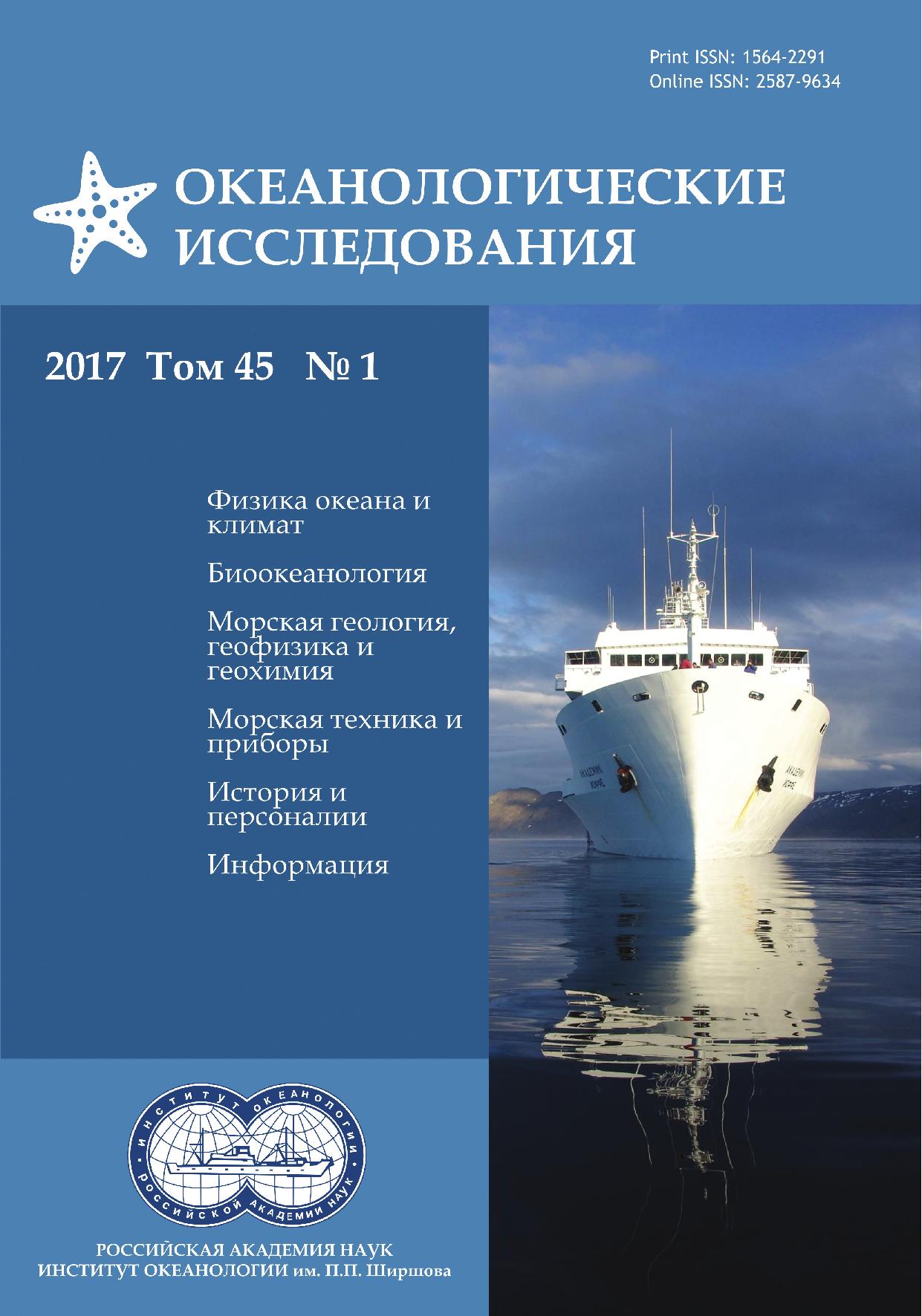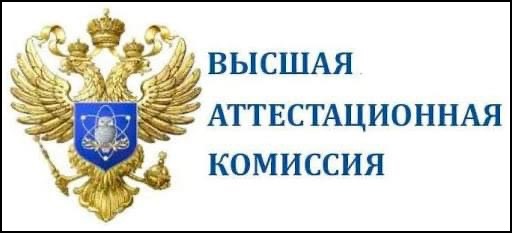Эволюция мезомасштабного антициклонического вихря и вихревых диполей/мультиполей на его основе в Юго-Восточной Балтике (спутниковая информация: май–июль 2015 г.)
Аннотация
На основе анализа последовательных спутниковых оптических (MODIS-Aqua/ Terra, AVHRR NOAA-18, VIIRS-SNPP, TIRS и OLI Landsat-8, ETM+ Landsat-7) и радиолокационных (Sentinel-1А, Radarsat-2) изображений прослежена эволюция мезомасштабного антициклонического вихря диаметром около 35 км с присоединенными циклонами (от двух до четырех) на его периферии на протяжении более полутора месяцев (с 15 мая по 7 июля 2015 г.) в Юго-Восточной Балтике. В течение примерно месяца положение антициклона мало менялось (центр – в среднем на 54°55’ с.ш., 19°15’ в.д.), однако в интервале 22 июня – 1 июля вихревой диполь, образованный этим антициклоном и циклоном на его северной периферии с диаметром, соизмеримым с диаметром антициклона, двигался в восточном направлении со средней скоростью около 4 км/сут. Предполагается, что такому перемещению квазисимметричного вихревого диполя способствовали его расположение севернее Гданьского залива и свойство диполя (грибовидного течения) двигаться в направлении его струйной части при ветровом воздействии (в данном случае при усилении западного ветра).
Литература
- Булычева Е.В., Костяной А.Г., Крек А.В. Межгодовая изменчивость нефтяного загрязнения морской поверхности Юго-Восточной Балтики в 2004-2015 гг. // Современные проблемы дистанционного зондирования Земли из космоса. 2016. Т. 13. № 4. С. 74–84.
- Гидрометеорология и гидрохимия морей СССР. Проект “Моря СССР”. Т. III. Балтийское море. Вып. 1. Гидрометеорологические условия / Под ред. Ф.С. Терзиева, В.А. Рожкова, А.И. Смирновой. СПб.: Гидрометеоиздат, 1992. 450 с.
- Гинзбург А.И., Булычева Е.В., Костяной А.Г., Соловьев Д.М. Вихревая динамика в Юго-Восточной Балтике по данным спутниковой радиолокации // Океанология. 2015а. Т. 55. № 6. С. 893–902.
- Гинзбург А.И., Булычева Е.В., Костяной А.Г., Соловьев Д.М. О роли вихрей в распространении нефтяных загрязнений по акватории Юго-Восточной Балтики (по данным спутникового мониторинга) // Современные проблемы дистанционного зондирования Земли из космоса. 2015б. Т. 12. № 3. С. 149–157.
- Гурова Е.С. О формировании и динамике вихря у побережья Юго-Восточной Балтики по данным дистанционного зондирования // Вестник Балтийского федерального университета им. И. Канта. 2012. Вып. 1. С. 16–21.
- Гурова Е.С., Иванов А.Ю. Особенности проявления гидродинамических структур в юго-восточной части Балтийского моря по данным спектрорадиометров MODIS и космической радиолокации // Исслед. Земли из космоса. 2011. № 4. С. 41–54.
- Каримова С.С., Лаврова О.Ю., Соловьев Д.М. Наблюдение вихревых структур Балтийского моря с помощью радиолокационных и радиометрических спутниковых данных // Исслед. Земли из космоса. 2011. № 5. С. 15–23.
- Лаврова О.Ю. Слики как индикаторы вихревой активности в прибрежной зоне // Современные проблемы дистанционного зондирования Земли из космоса. 2005. Т. 2. С. 118–123.
- Лаврова О.Ю., Костяной А.Г., Лебедев С.А., Митягина М.И, Гинзбург А.И., Шеремет Н.А. Комплексный спутниковый мониторинг морей России. М.: ИКИ РАН, 2011. 470 с.
- Лаврова О.Ю., Митягина М.И., Костяной А.Г. Спутниковые методы выявления и мониторинга зон экологического риска морских акваторий. М.: ИКИ РАН, 2016. 335 с.
- Федоров К.Н., Гинзбург А.И. Приповерхностный слой океана. Л.: Гидрометеоиздат, 1988. 303 с.
- Федоров К.Н., Гинзбург А.И. Грибовидные течения (вихревые диполи) – одна из наиболее распространенных форм когерентных движений в океане // Когерентные структуры и самоорганизация океанских движений. М.: Наука, 1992. С. 12–20.
- Щука Т.А., Щука С.А. Динамика количественных характеристик чужеродных видов зоопланктона в юго-восточной части Балтийского моря в июле 2003-2015 гг. в связи с термохалинными условиями // ПЭММЭ. 2016. Т. XXVII. № 1. С. 86–108.
- Gurova E., Chubarenko B. Remote sensing observations of coastal sub-mesoscale eddies in the south-eastern Baltic // Oceanologia. 2012. Vol. 54. No. 4. P. 631–654.
- Horstmann U. Distribution Patterns of Temperature and Water Colour in the Baltic Sea as recorded in Satellite Images: Indicators for Phytoplankton Growth. Berichte Institute fur Meereskunde, Kiel. 1983. Vol. 1. No. 106. 147 p.
- Lavrova O., Mityagina M., Bocharova N., Gade M. Multisensor observation of eddies and mesoscale features in coastal zones // Remote Sensing of the European Seas / V. Barale, M. Gade (Eds.). Springer Verlag, 2008. P. 463–474.
- Oberg J. Cyanobacteria blooms in the Baltic Sea // HELCOM Baltic Sea Environment Fact Sheets 2016. 2016. URL: http://helcom.f/baltic-sea-trends/environment-fact-sheets/eutrophication/cyanobacterial-blooms-in-the-baltic-sea/.
- Tavri A, Singha S, Lehner S, Topouzelis K. Observation of sub-mesoscale eddies over Baltic Sea using TERRASAR-X and oceanographic data. Proc. ‘Living Planet Symposium 2016’, Prague, Czech Republic, 9–13 May 2016. 2016. (ESA SP-740, August 2016).
Передача авторских прав происходит на основании лицензионного договора между Автором и Федеральным государственным бюджетным учреждением науки Институт океанологии им. П.П. Ширшова Российской академии наук (ИО РАН)













